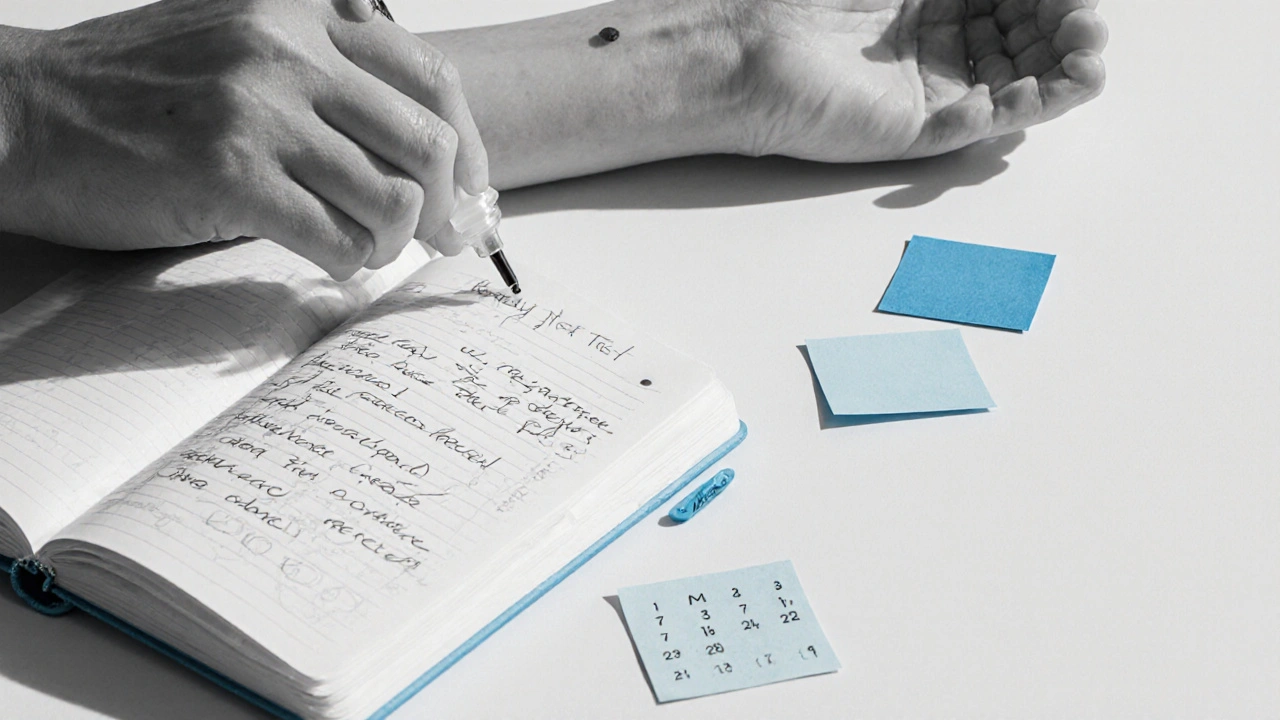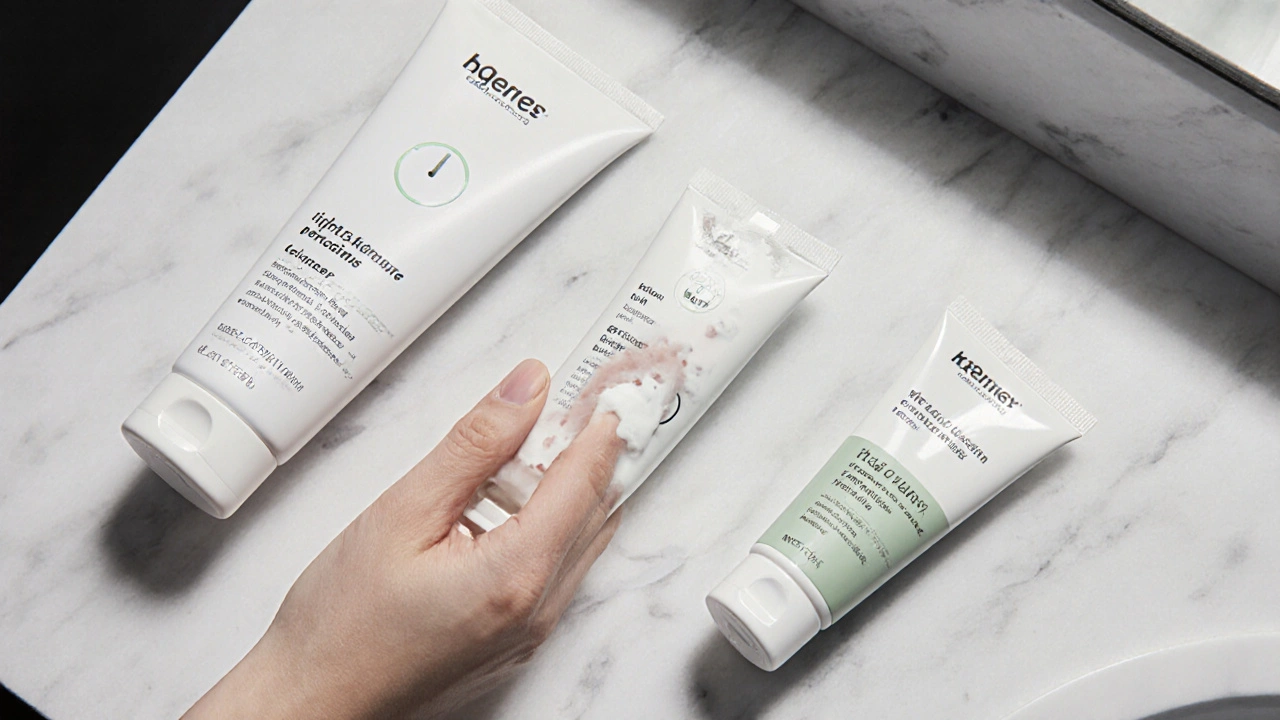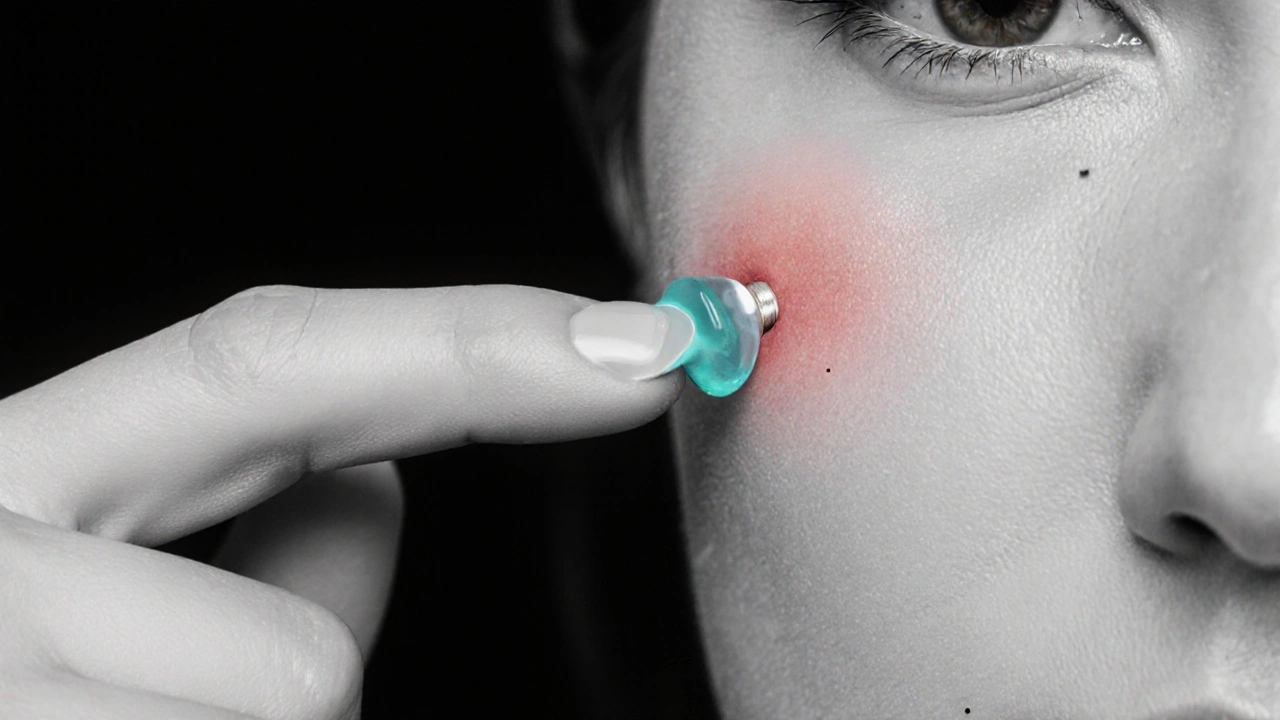Benzoyl Peroxide Concentration Calculator
Choose your skin sensitivity level to find the optimal benzoyl peroxide concentration for effective acne treatment with minimal irritation.
Skin Sensitivity Assessment
Recommendation
Recommended Concentration
Effectiveness
Irritation Risk
Personalized Tip
Benzoyl Peroxide is a topical acne-fighting ingredient that releases oxygen to kill acne‑causing bacteria and reduce inflammation. It’s a staple in many over‑the‑counter spot treatments, but people with delicate skin often wonder if it’s safe to use.
If you’ve ever felt a stinging burn after applying an acne product, you’re likely dealing with sensitive skin skin that reacts easily to external factors like chemicals, friction, or temperature changes. The good news? You don’t have to ditch benzoyl peroxide entirely. With a few strategic tweaks you can keep the breakout‑fighting power while soothing the irritation.
Why Irritation Happens
When Benzoy2 Peroxide penetrates the hair follicle, it creates an oxidative environment that kills Propionibacterium acnes (the bacteria behind most pimples). That oxidative burst also strips a tiny amount of the skin’s natural oil barrier, which can trigger redness, dryness, and that familiar tingling sensation. For people whose barrier is already compromised, the effect is magnified.
Choosing the Right Concentration
Concentration is the first lever you can adjust. Products typically come in 2.5%, 5%, and 10% strengths. A lower percentage delivers a gentler kill‑rate, which means less collateral irritation. The trade‑off is a slightly slower improvement timeline.
Here’s a quick rule of thumb: start with the lowest concentration that your skin can tolerate and only bump it up if you see no improvement after four weeks.
Patch Testing Made Simple
Before you slap a new product on your face, do a patch test. Apply a pea‑size amount to a discreet area-like behind the ear or on the inner forearm-once a day for three consecutive days. If you notice persistent redness, itching, or swelling, that strength is probably too aggressive for you.
Mark the date and outcome in a small skin‑journal. Over time you’ll build a personalized tolerance map that saves you from needless discomfort.

Layering with Moisturizers
Moisturizers act like a protective shield that helps the skin retain water while you treat acne. Look for ingredients that repair the barrier without clogging pores: ceramides, hyaluronic acid, and niacinamide are top picks.
Apply the moisturizer *after* the benzoyl peroxide has fully absorbed (usually 5‑10 minutes). This sequencing locks in the active ingredient while immediately cushioning the surface.
Complementary Ingredients to Calm the Skin
Some actives work hand‑in‑hand with benzoyl peroxide to reduce irritation:
- Niacinamide a form of vitamin B3 that improves barrier function and reduces redness
- Panthenol pro‑vitamin B5 that soothes and hydrates irritated skin
- Algae extract provides antioxidant protection and helps calm inflammation
These ingredients can be found in many post‑treatment serums and moisturizers. Adding one to your routine can dramatically cut down the post‑application sting.
Daily Routine Tips
- Cleanse with a gentle, sulfate‑free cleanser. Avoid scrubbing.
- Pat skin dry; don’t rub.
- Apply a thin layer of benzoyl peroxide only on active breakouts.
- Wait 5‑10 minutes, then seal with a barrier‑repair moisturizer.
- If you’re using other actives (e.g., retinol), place them **after** the moisturizer to keep the peroxide from breaking down.
- Finish with a broad‑spectrum SPF 30+ sunscreen each morning-benzoyl peroxide can make skin more photosensitive.
Consistency beats intensity. A modest dose applied twice daily will out‑perform a heavy nightly dose that leaves you red and raw.

When to Seek Professional Help
If you notice persistent swelling, pus‑filled lesions, or a rash that spreads beyond the treated area, it’s time to consult a Dermatologist a medical professional specializing in skin health who can prescribe stronger or alternative therapies. They may recommend prescription‑strength benzoyl peroxide combined with oral antibiotics or a different topical agent.
Quick Reference Table
| Concentration | Typical Effectiveness (pimple reduction) | Irritation Level (Low/Medium/High) | Best For |
|---|---|---|---|
| 2.5% | 30‑40% improvement after 4‑6 weeks | Low | Very sensitive skin, first‑time users |
| 5% | 45‑55% improvement after 4‑6 weeks | Medium | Moderately sensitive skin, steady users |
| 10% | 60‑70% improvement after 4‑6 weeks | High | Resistant acne, non‑sensitive skin |
Frequently Asked Questions
Can I use benzoyl peroxide every day?
Yes, but start with once‑daily application on the affected spots. If your skin tolerates it after two weeks, you can add a second nightly dose.
Is it okay to combine benzoyl peroxide with retinol?
Only if you separate them by at least 30 minutes or apply retinol in the morning and peroxide at night. Both are potent and can over‑strip the barrier if used together.
How long does the stinging sensation usually last?
A mild tingling should subside within 5‑10 minutes. Persistent burning beyond that period signals over‑use or a concentration that’s too high for your skin.
Do I need to wash my face before re‑applying?
No. Re‑apply only to clean, dry skin. Rinsing removes the active ingredient, reducing its efficacy.
What’s the best moisturizer to pair with benzoyl peroxide?
A lightweight, non‑comedogenic formula containing ceramides, hyaluronic acid, or niacinamide works well. Look for “oil‑free” or “barrier‑repair” in the description.

11 Responses
It's astonishing how many people treat benzoyl peroxide like a holy grail without considering the ethical responsibility we have to our skin. If you're truly serious about health you wouldn't slap a 10% solution on a sensitive face without a proper plan. The principle is simple: protect the barrier before you try to destroy bacteria. Ignoring that is not just careless, it's morally negligent. You owe it to yourself to start low, monitor, and only then consider stepping up.
Actually the whole premise of moralizing about skin care is overblown. People have different tolerances and what works for one might work for another. The calculator in the post already gives a clear, data‑driven recommendation, so there's no need for a lecture.
I understand the concern about barrier damage, and that's why I always suggest a gentle patch test first. Apply a tiny amount to the inner forearm, wait three days, and note any redness or itching. If the skin stays calm, you can proceed with a low concentration and follow up with a ceramide‑rich moisturizer. This systematic approach minimizes risk while still delivering results.
Benzoyl peroxide is often praised as a universal acne solution. The reality is that it operates by introducing free radicals that target bacteria. This process inevitably disturbs the skin’s natural barrier. For individuals with compromised barrier function the side effects become pronounced. The concentration of the active ingredient dictates the magnitude of both benefit and irritation. Lower percentages such as 2.5 percent provide a gentler approach. Higher percentages like 10 percent accelerate clearance but increase the risk of redness and burning. Patch testing remains the most reliable method to gauge personal tolerance. Apply a pea sized amount to a discreet area and observe the reaction over three days. If no excessive erythema or pruritus occurs the concentration may be deemed acceptable. Subsequent application should be limited to active lesions rather than the entire face. Moisturizing after absorption helps to replenish lost lipids and soothe inflammation. Ingredients such as ceramides hyaluronic acid and niacinamide complement the treatment without clogging pores. Consistency in routine beats sporadic high‑dose usage every night. Ultimately the decision rests on balancing efficacy with comfort.
That summary hits the key points nicely. Keeping the routine simple and adding a barrier‑repair moisturizer can really make a difference for sensitive skin.
Oh, the drama of a simple moisturizer! One might think it’s trivial, yet for the fragile epidermis it’s nothing short of a rescue mission.
While the post covers the basics, it forgets to mention that benzoyl peroxide can deactivate certain vitamins like C and E if applied too close together. Stacking actives without timing can lead to unexpected irritation. Timing your skincare layers by at least 30 minutes preserves each ingredient’s potency. Also, remember that sunscreen is non‑negotiable; peroxide makes your skin more photosensitive.
Just stop overthinking it.
People love to act like they’re scientists, but most of this is just hype 😒.
Indeed, a disciplined approach combined with a positive mindset can transform the experience. Embrace the routine, stay consistent, and you will see improvements 😊.
Great discussion, everyone, and thank you for sharing your insights, especially the practical tips about patch testing, timing actives, and the importance of moisturizers, which are all so valuable, keep the conversation going!